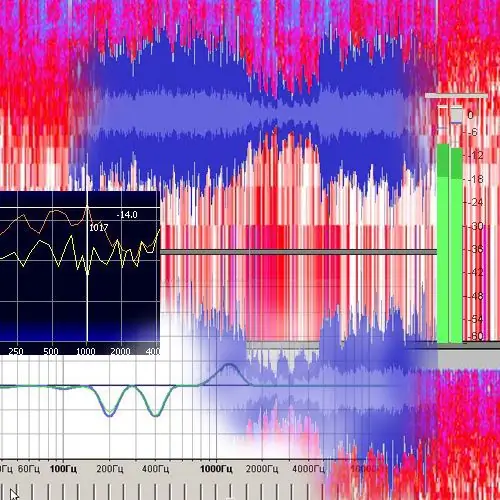When the task is set to "muffle the voice in a song", in fact, this means the following: there is a phonogram with an audio recording of the song, you need to make sure that only the voice sounded quieter during playback, while the musical accompaniment sounded unchanged. If you have a multichannel phonogram in which the voice is highlighted in a separate track, you can mute (and even completely remove) the voice during multichannel playback without affecting the phonogram. However, what if the voice of the soloist and the sounds of the musical accompaniment are mixed into two stereo soundtracks?

Instructions
Step 1
First of all, you should check whether it is possible to simply "squeeze" the most prominent voice frequencies with an equalizer without affecting the phonogram as a whole. However, keep in mind: the human voice, in addition to the volume (which needs to be "muffled"), also has a complex frequency range - singing intonation can capture frequencies from 200 hertz to 8 kilohertz. Most of the sounds of the musical accompaniment of the song are usually located in the same frequency band. Therefore, equalization will only be effective if important elements of the musical accompaniment are not mixed with the voice.
Step 2
If you are lucky, then you take a phonogram, run it through a spectrum analyzer and select frequency peaks in the range of 300 - 900 hertz. After that, when playing with a good multi-band equalizer, you muffle these peaks. Thus, the problem is solved; however, this does not happen very often, and therefore you will have to move on to the next stage.
Step 3
Separate the voice (minimizing losses as much as possible) into a separate track, after which you use the well-known antiphase effect - since the sound is a wave, the addition of the direct and inverted sound gives zero. Technically, this is implemented as follows. First, the voice is "cut" from the phonogram, in several passes by narrow-band frequency filters and noise suppressors. Then the highlighted (as far as possible) voice is recorded on a separate track.
Step 4
And finally, the original phonogram and the selected voice are simultaneously run through the so-called comparator, in which the original phonogram is fed to the direct input, and the selected voice to the inverse one. The inverted voice is in antiphase with the original one on the phonogram; by playing with the mixing parameters in the comparator, the soloist's voice can eventually be muffled somewhat. After that, the result is recorded, the resulting phonogram is played on conventional sound-reproducing equipment.






